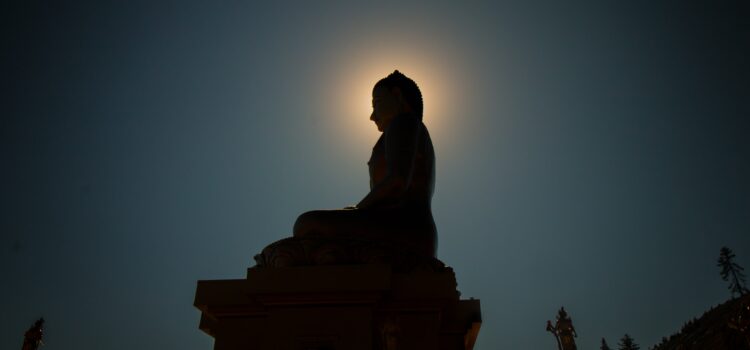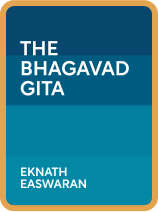

This article is an excerpt from the Shortform book guide to "The Bhagavad Gita" by Eknath Easwaran. Shortform has the world's best summaries and analyses of books you should be reading.
Like this article? Sign up for a free trial here .
Who are The Bhagavad Gita characters? Why are they important in the story?
The Bhagavad Gita is told as a story within a story. The story begins with Sanjaya recounting a vision to a king, Dhritarashtra. The story he tells is about a prince, Arjuna, and the god Krishna. Each of The Bhagavad Gita characters has an important role.
Read more about The Bhagavad Gita characters and what they do.
The Bhagavad Gita Characters
There are four The Bhagavad Gita characters. The four characters in the story are each necessary and important.
Arjuna
The first of The Bhagavad Gita characters is Prince Arjuna. Prince Arjuna leads the Pandavas’ army. His chariot is driven by Sri Krishna, an incarnation of the god Vishnu, who has taken a mortal form in The Bhagavad Gita. Krishna has been Arjuna’s friend and advisor throughout his life, but he can’t fight this battle. Leading the army is Arjuna’s dharma—his duty and destiny. Krishna is only there to support him.
(Shortform note: “Sri,” sometimes spelled “Shri,” is a term of respect that doesn’t have a direct translation.)
As Arjuna sees that the fighting’s about to start, he asks Krishna to drive his chariot in between the two armies so that he can take a closer look at his enemies. When he sees the people in the Kauravas’ army, he recognizes many of them as his own family and friends.
Arjuna is overcome with despair. He tells Krishna that he doesn’t want to fight against his own family, and that his family fighting within itself will lead to chaos in the kingdom. He also says that there are great heroes and respected scholars on the other side, and Arjuna questions how he could ever live with himself if he killed them in battle. Arjuna says that it would be better to lay down his weapons and let the Kauravas kill him.
Krishna
Prince Arjuna leads the Pandavas’ army. His chariot is driven by Sri Krishna, an incarnation of the god Vishnu, who has taken a mortal form in The Bhagavad Gita. Krishna has been Arjuna’s friend and advisor throughout his life, but he can’t fight this battle. Leading the army is Arjuna’s dharma—his duty and destiny. Krishna is only there to support him.
Krishna explains that temporary things shouldn’t be considered real. Pain and pleasure, heat and cold, and even life and death are temporary. Similarly, the temporary bodies of the men Arjuna will fight against aren’t real; their true selves are eternal and immutable, and change bodies as a living person changes clothes. Knowing that, Krishna asks rhetorically, how can Arjuna kill or be killed by them?
People who understand the difference between the real and the illusory will remain calm in any situation, unaffected by either hard times or good times. Such people have taken a key step toward breaking the cycle of reincarnation.
Even if Arjuna can’t currently separate his ideas of the temporary bodies from the true souls that inhabit them, Krishna points out that death and rebirth happen to everyone. These men will die whether or not Arjuna kills them, and there’s no point in mourning the inevitable.
Arjuna is awed by everything that Krishna has told him. Over the course of this conversation, Krishna has guided him from being a short-sighted warrior prince, concerned only with the battle in front of him, to someone who’s ready to begin the true spiritual work of breaking free from karma and reincarnation by devoting himself to Vishnu. However, Arjuna is still a practical person who needs to see things in order to fully grasp them. He begs Krishna to reveal his true, immortal self: the master of all creation.
Krishna agrees, promising to show Arjuna his countless forms, a sight that the greatest sages and mystics have longed to see but have never been allowed to. However, Krishna warns Arjuna that he won’t be able to see this vision with his eyes; instead, Krishna grants him spiritual sight that can perceive the true form of God.
Arjuna then sees a being who shines like a thousand suns all rising together. Krishna’s true self has an infinite number of faces overseeing the entire universe. He carries countless weapons in countless hands as symbols of his limitless power. Within Krishna’s body, Arjuna sees the form of every object that has ever existed merged into one.
Arjuna is completely overwhelmed and falls to his knees. He tries to tell Krishna what he is seeing. He sees the god Brahma sitting on a lotus flower, all of the ancient sages, and mythical monsters. The entire universe makes up God’s body, which has infinite mouths, stomachs, arms, and eyes. The being wears a crown and gleams with heavenly jewels. The light that radiates from its body warms everything that exists.
Sanjaya
Another one of The Bhagavad Gita characters is Sanjaya. The Bhagavad Gita is framed as a story-within-a-story. Sanjaya, an advisor to king Dhritarashtra, is having a vision of the conversation between Arjuna and Krishna and telling the king what he sees. This is possible because Sanjaya has been blessed with the gift of divine sight, so he’s able to see everything that happens at Kurukshetra as if he were there in person.
Sanjaya’s Prediction
Sanjaya, who has been observing Arjuna and Krishna’s conversation and reporting what he hears to king Dhritarashtra, says that he is overwhelmed and overjoyed to have heard the divine mysteries directly from Krishna himself. He also reveals that he saw the divine vision of Krishna’s true, infinite form—something that supposedly only Arjuna had seen.
Sanjaya predicts that, in spite of the Kauravas’ much larger army, the Pandavas will win the battle with Arjuna and Krishna leading them. He says that anywhere Krishna and Arjuna are, there is certain to be victory, happiness, wealth, and wisdom. That final prediction marks the end of The Bhagavad Gita.
Dhritarashtra
There’s a great deal of history drawing these two armies to Kurukshetra. This is demonstrated through the conversation of two of The Bhagavad Gita characters.
A man named Pandu, of the Kuru dynasty, was the king of Hastinapura. While he ruled he shared power with his brother Dhritarashtra. However, Pandu died young, and Dhritarashtra was born blind, so he couldn’t be named king under the laws of Hastinapura.
Therefore, Pandu’s son Yudhishthira should have been the next king, but he was too young to take the throne. Dhritarashtra continued to rule in Yudhishthira’s stead until he became old enough to take the throne himself. However, when Yudhishthira came of age, Dhritarashtra began plotting for his own son Duryodhana to succeed him instead. That scheming led to the current conflict between the Pandavas, the supporters of Yudhishthira who call themselves the sons of Pandu; and the Kauravas, the supporters of Duryodhana and so-called sons of Kuru—though, in reality, both sides are part of the Kuru dynasty.
Before the battle begins, prince Duryodhana of the Kauravas studies the opposing army. He reports that there are many great heroes among the Pandavas, but that their own army has equally great men and is much larger. He ends with a call for his soldiers to stand firm and support Bhishma, the eldest of the Kurus and the leader of their army. Bhishma responds to this by blowing a conch horn—a call to arms, which is taken up by the rest of his army. The Pandava army responds with horns and drums of their own.
Sanjaya and Dhritarashtra
The Bhagavad Gita is framed as a story-within-a-story. Sanjaya, an advisor to king Dhritarashtra, is having a vision of the conversation between Arjuna and Krishna and telling the king what he sees. This is possible because Sanjaya has been blessed with the gift of divine sight, so he’s able to see everything that happens at Kurukshetra as if he were there in person.
Dhritarashtra refers to Kurukshetra as the “field of dharma.” Dharma, which can be loosely translated as both duty and law, refers both to the cosmic rules of the universe and to people’s individual destinies. Calling Kurukshetra the field of dharma implies that what’s about to happen isn’t only a physical battle, but a spiritual struggle over what is right and just.

———End of Preview———
Like what you just read? Read the rest of the world's best book summary and analysis of Eknath Easwaran's "The Bhagavad Gita" at Shortform .
Here's what you'll find in our full The Bhagavad Gita summary :
- The key principles of the Hindu faith
- Why all spirituality is good and there is no single path to God
- The 3 reasons that can explain every action people take






